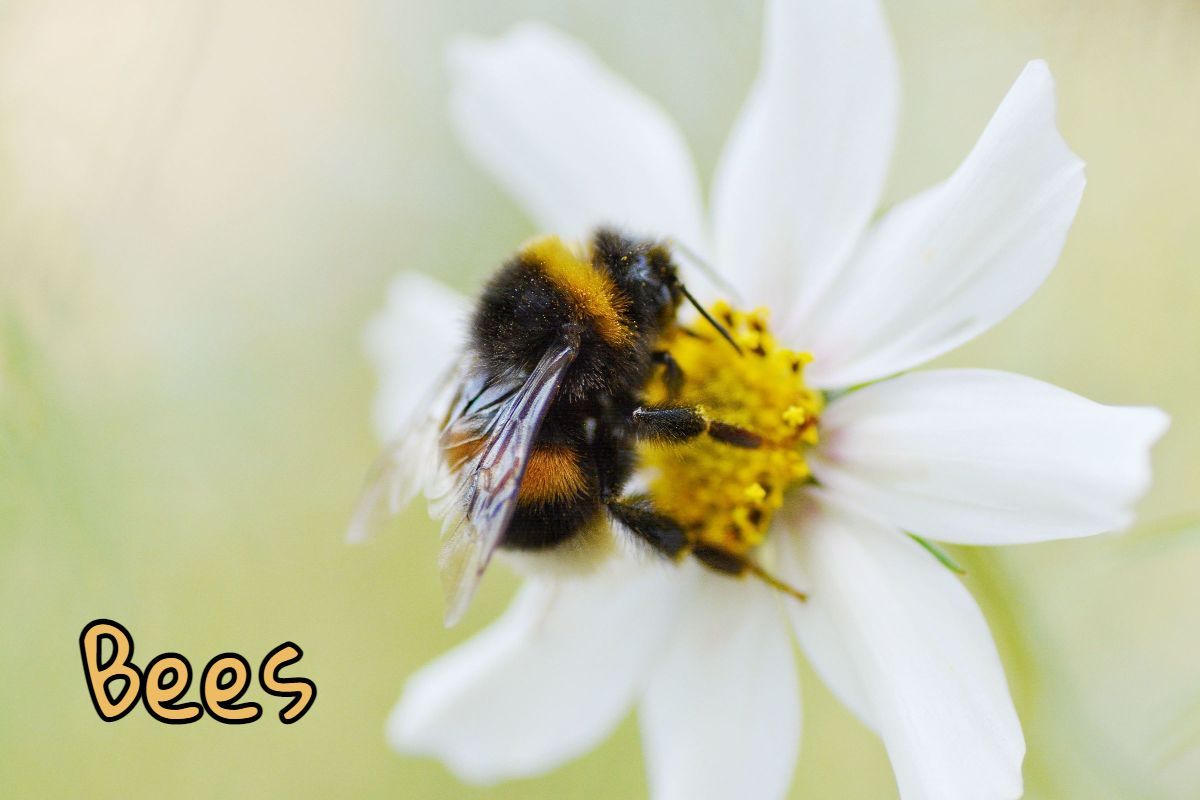
The Humble Bumble
Apparently, bumble-bees were once called humble-bees. Darwin, and others, referred to them as humble-bees simply because, as they fly, they hum. ¹
Over time, the use of the prefix bumble became more popular, partly with the help of Babbity Bumble’s appearance in Beatrix Potter’s ‘Tale of Mrs Tittlemouse’.
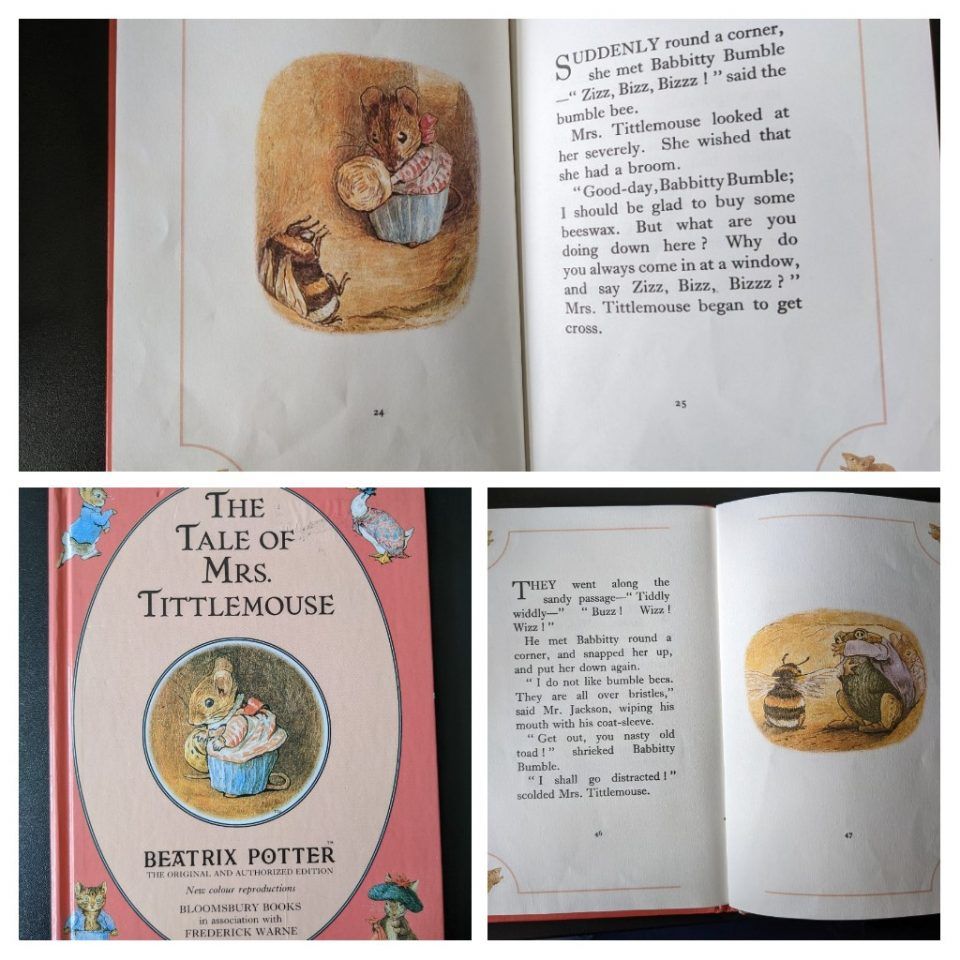
Was it the advent of Potter’s notorious bee, messing up Mrs Tittlemouse’s home? The satisfying way bumble-bee alliterates? Or the way bees appear to ‘bumble’ around from flower to flower, like flying fluff balls? Whatever the reason, bumble won the battle.
However, after spending time learning about bees with our children, I think humble-bee could be a more appropriate name. Not just because they hum, but because of their seemingly humble attitude.
Bees work hard throughout the day, gathering pollen and nectar for the benefit of the hive. They are not concerned with prolonging their own lives. Rather, they work tirelessly until their wings fray, and they start to bald – leading to their quick demise. ²
One of a Christian’s defining characteristics should be humility, as it was Jesus’.
Humility isn’t about feeling a sense of shame for our mistakes After all, Jesus was humble, and he never did anything wrong.
Christian humility begins by recognising our dependence on God for everything. Just as the bumble-bee is aware of its dependence on the hive for survival. It is impossible to become arrogant, or to think too highly of ourselves, when we realise that everything we enjoy is a gift from God. From the energy we have when we wake up in the morning, to the food on our plates, to the knowledge we have collected over the years. Our children, our homes, the air we breathe. Our ability to help others, our salvation. All is from God.
Jesus was aware of his dependence on his father, God. Though he was so powerful himself, still he prayed continually, seeking God’s help in all things.
Humility is lived out by putting others before ourselves – as a bee puts the hive before itself, or like Jesus, a great king, who was willing to make himself a servant to all.
The life of a bumble-bee is inspiring – but it is Jesus who shows us how such humility can be lived out in the life of a human.
“When we see that humility is something infinitely deeper than contrition, and accept it as our participation in the life of Jesus, we shall begin to learn that it is our true nobility, and that to prove it in being servants of all is the highest fulfilment of our destiny as men created in the image of God.” (Murray, ‘Humility’).
Phillipians 2:3 says:
Do nothing out of selfish ambition or vain conceit. Rather, in humility value others above yourselves, not looking to your own interests but each of you to the interests of the others.
²https://www.newscientist.com/article/mg13418233-200-science-busy-bees-work-themselves-to-death/
Our Bee Diary
When Bee week came round in our nature curriculum, we started out learning the life cycle of the bee using this resource from Little Spark Company.
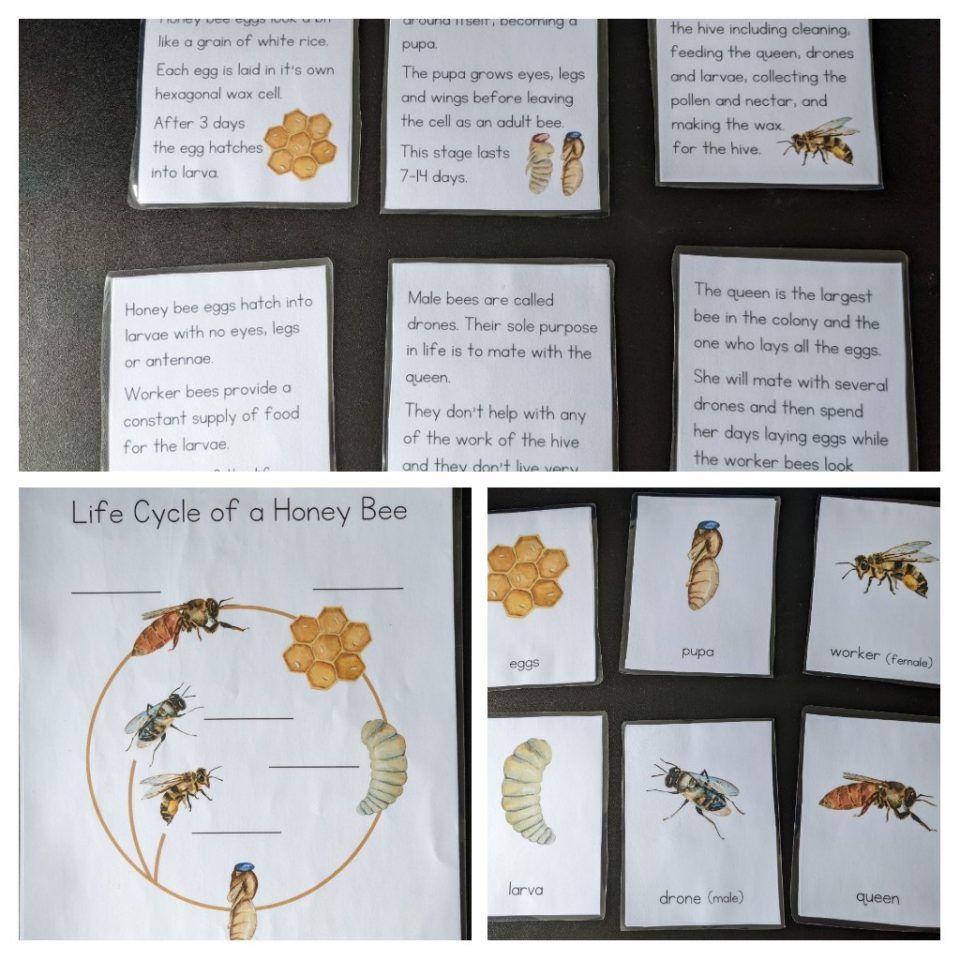
Then we looked at the important role of pollination. We used this resource from ‘Montessori for Moms’ to study the different pollinators and their roles, and played a card match game too.
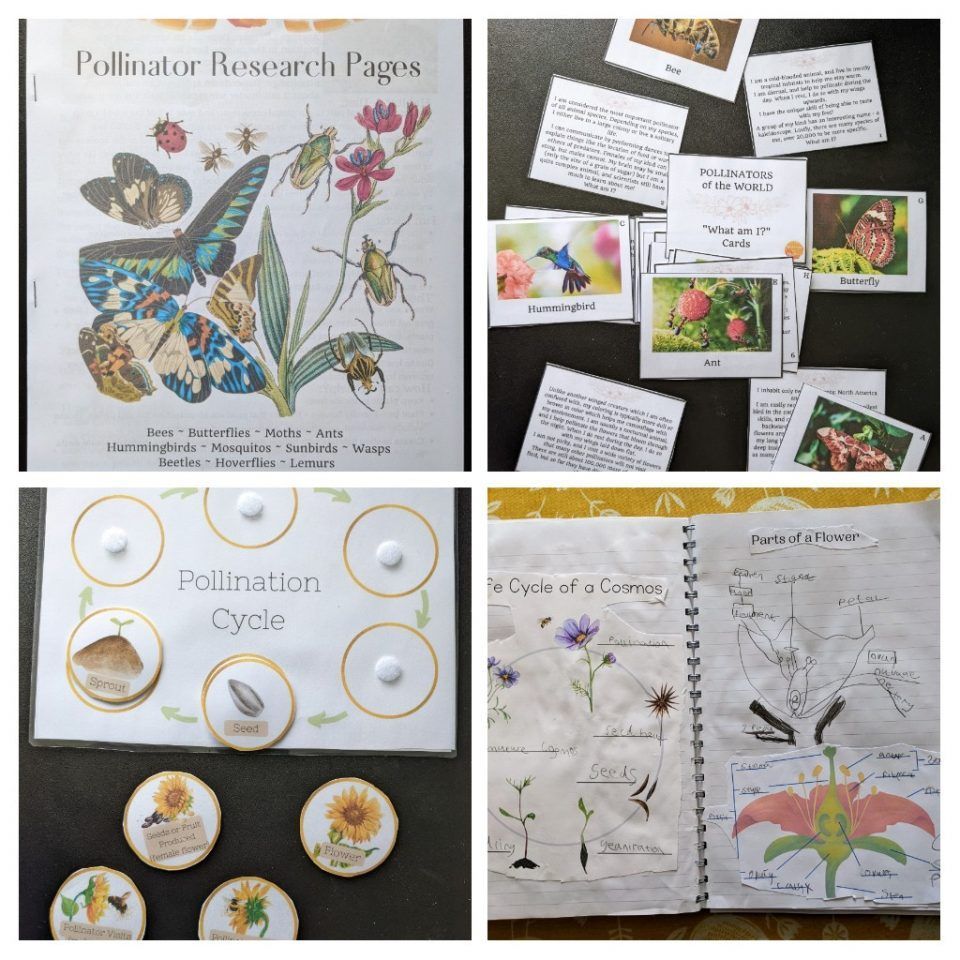
Both the above 2 resources came included in the Spring Mega Bundle. It was £19.90 (25USD) and included many nature resources, that we have used to supplement our ENWC curriculum. It is not something I would purchase regularly, however, this year’s spring package really suited our needs.
Next we read this book. I would have liked it to be a bit more informative, but the illustrations and cut out parts are beautifully done.
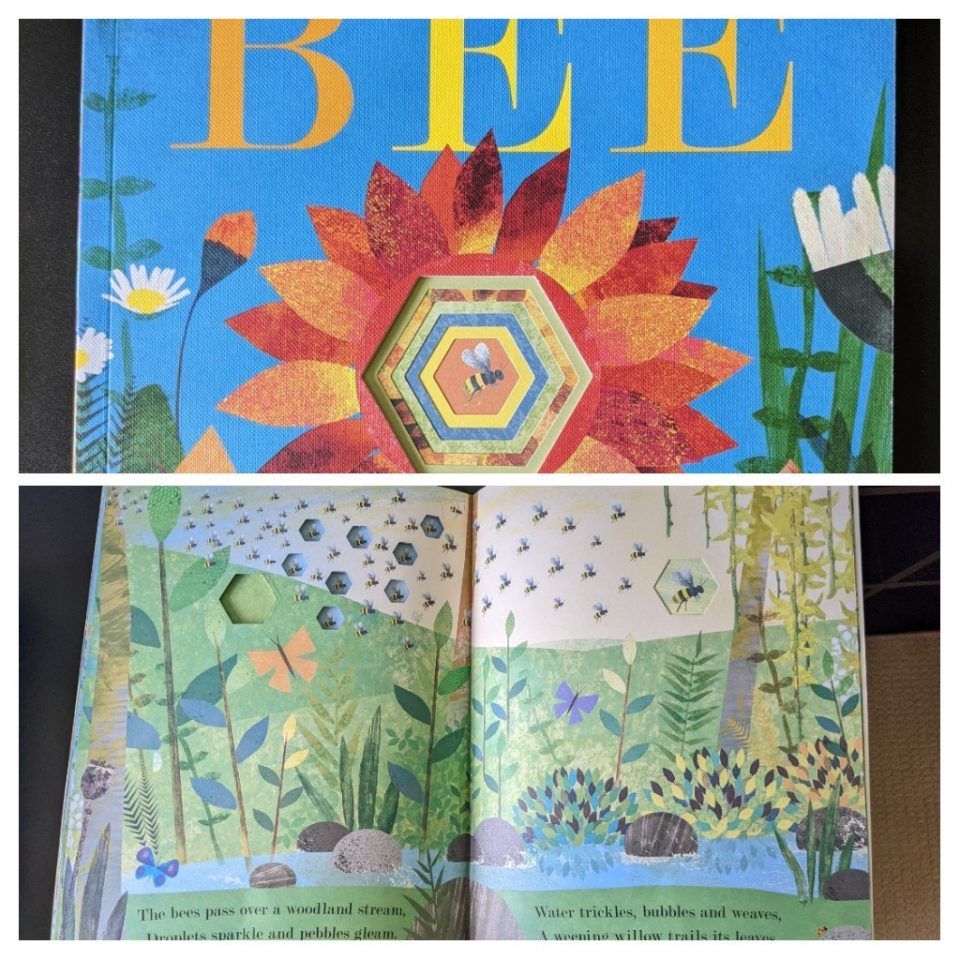
What the book lacked in information, the ‘Bees are Brilliant’ Rhino readers ebook, from twinkl, made up for!
Once we’d spent some time studying bees, we went out for a walk to see how many we could spot. We used this identification guide from The Wildlife Trusts and found a good number of different bees just by looking at the flowers poking out of people’s front gardens!
We also read the poem, and looked at the piece of artwork, included in the ENWC curriculum. The kids had a go at writing their own poems and drawing their own labelled bees.
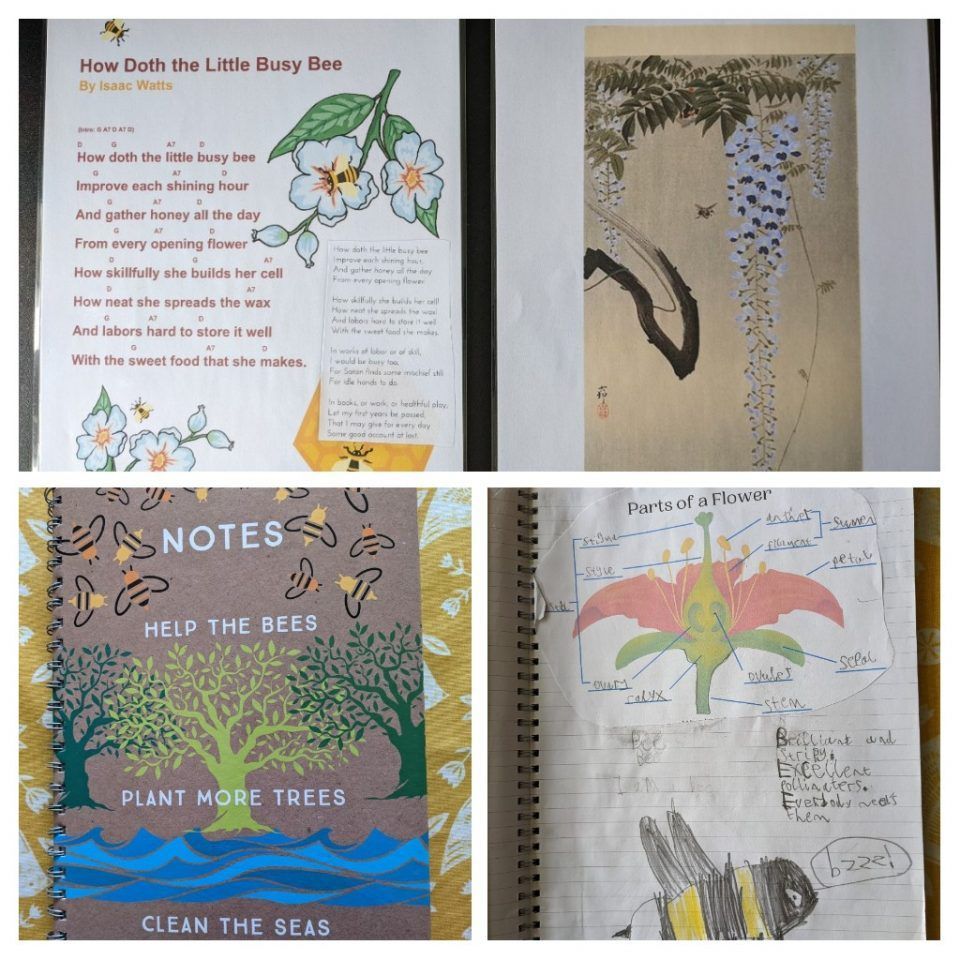
Later in the week the children had a go at making their own bees wax candles using sheets of honeycomb wax. Seeing, and being able to touch, the hexagon pods, really brought to life the remarkable capabilities of the honey-bee.
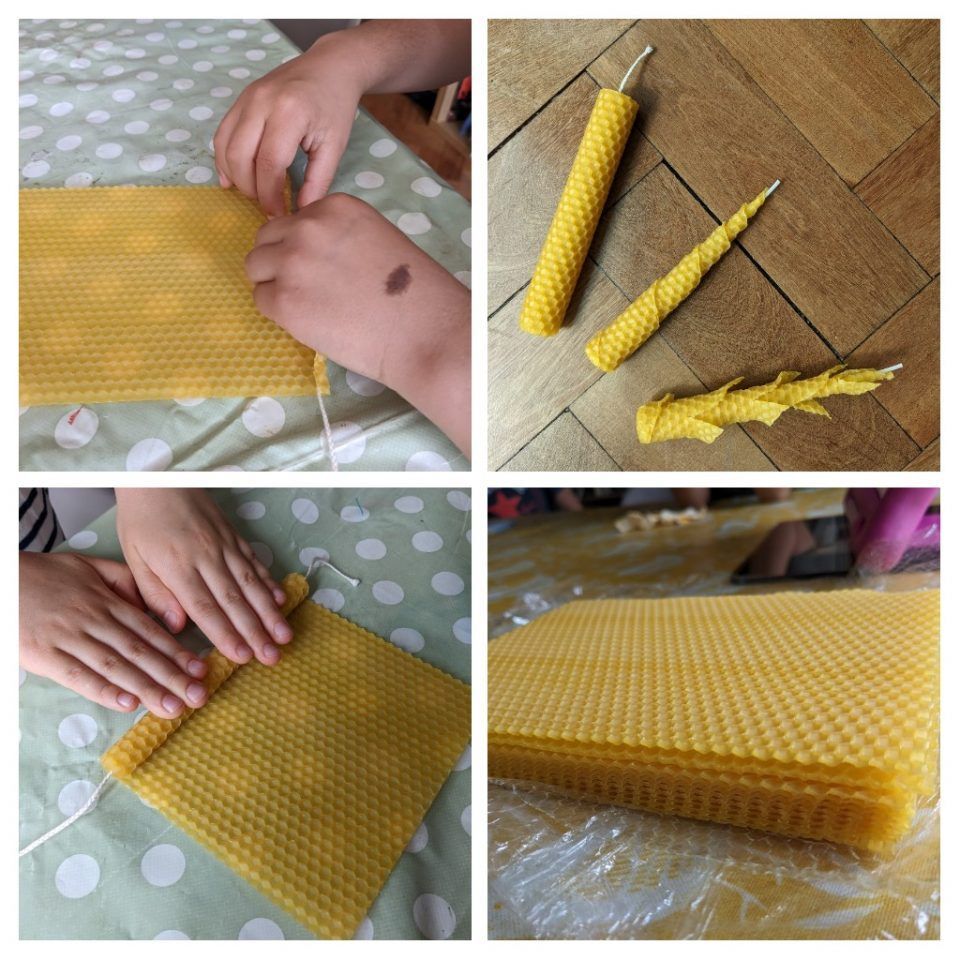
My eldest also made some honey flapjacks using this recipe from Scholastic.
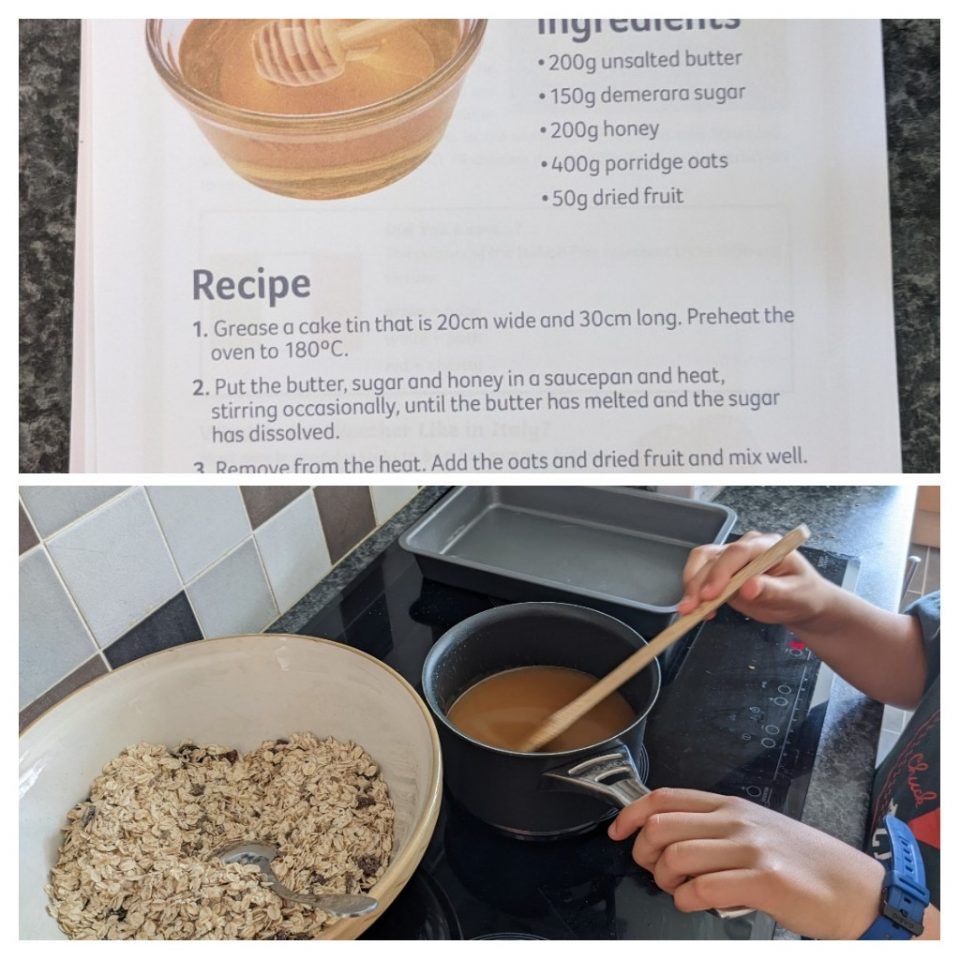
We had a go at this great activity, also from Scholastic. We read a story about the waggle dance and practised our own waggle dances, directing honey-bees to flowers. Then we used a large, printed protractor and a wooden metre ruler, to measure the angles between our printed sun and flower.
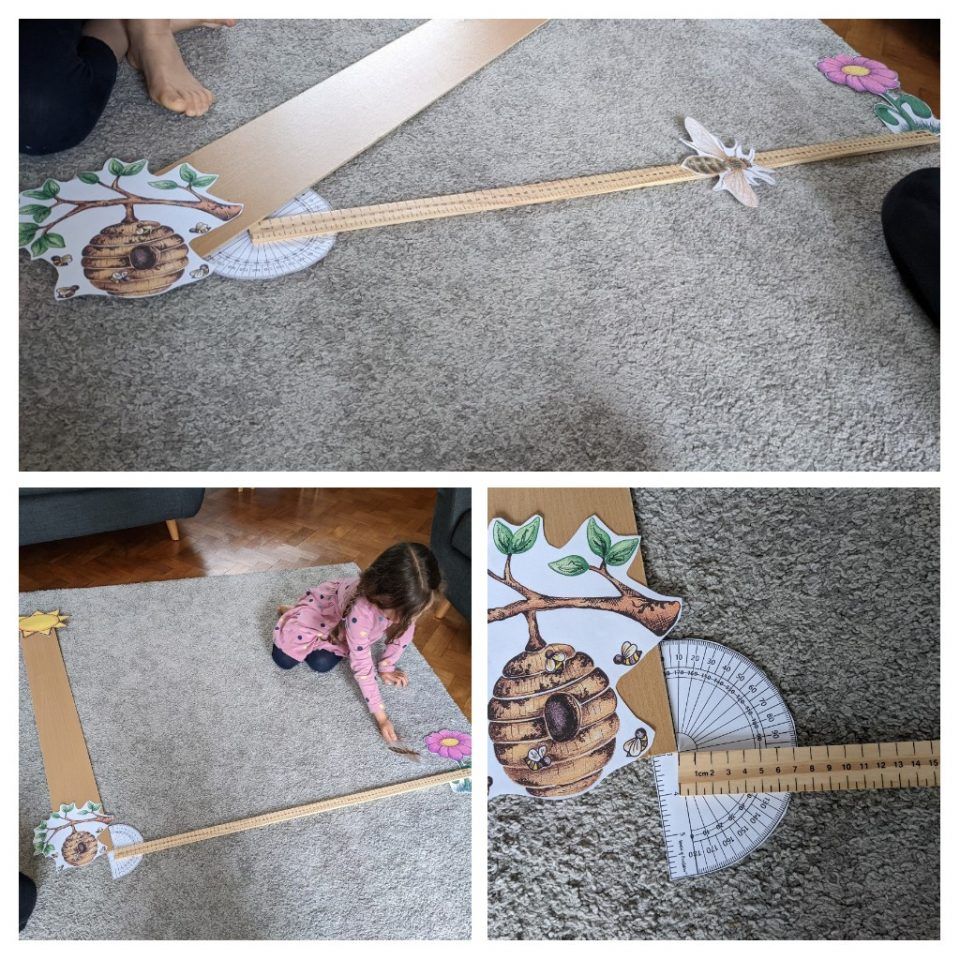
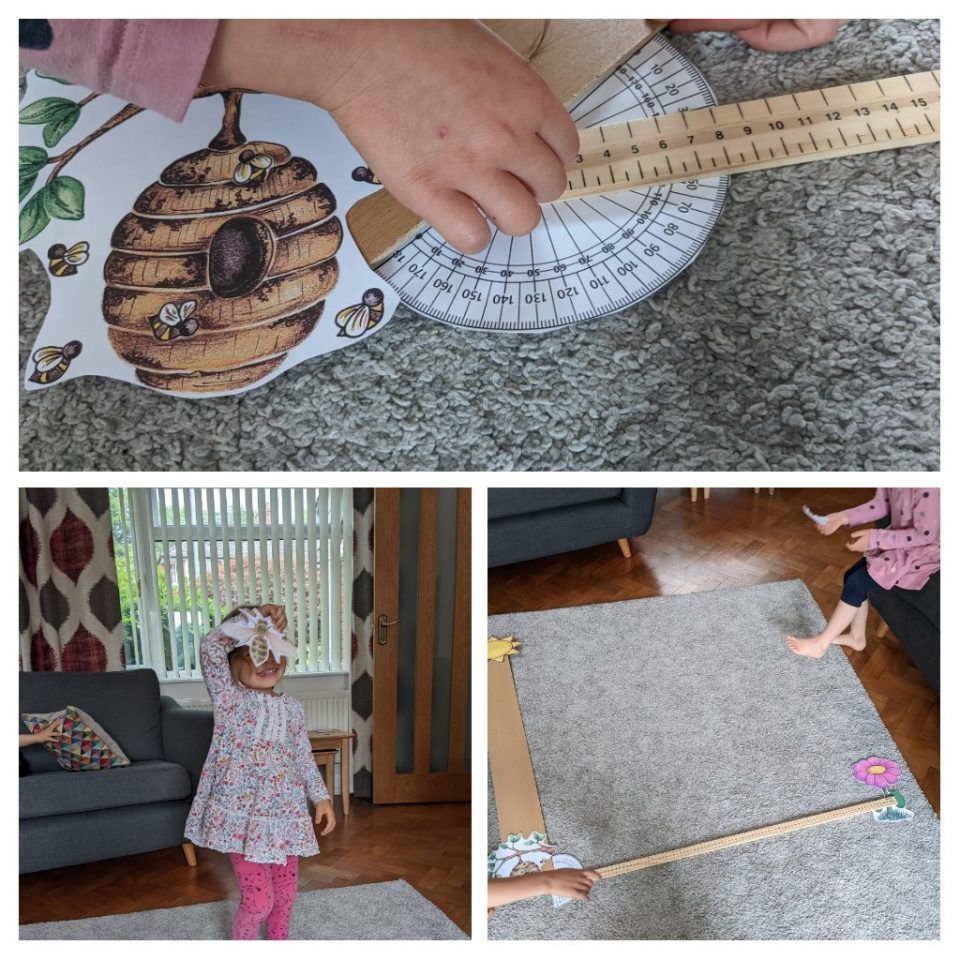
As it was close to Father’s Day, the children made bee themed Father’s Day cards using airdry foam clay. My youngest made fingerprint bees to decorate the inside of the cards too.
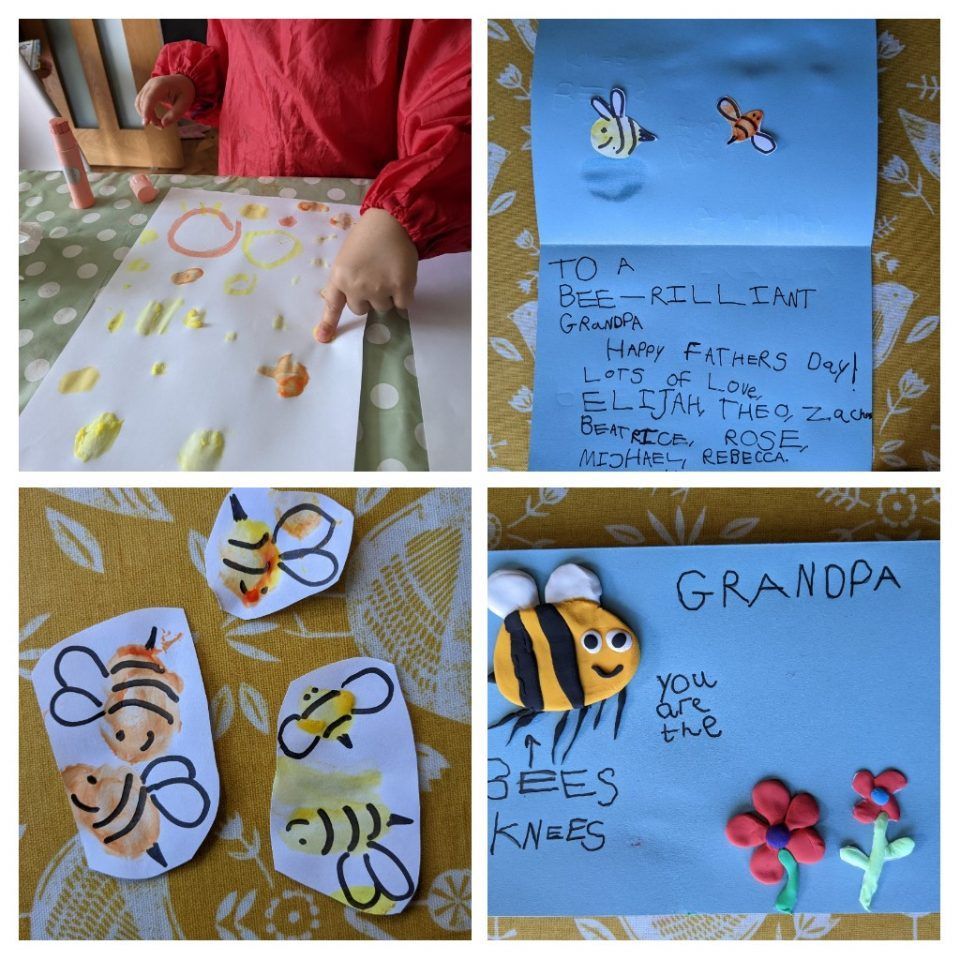
We found a local beekeeper and picked up some raw honey and pollen protein. The pollen protein is small stones of pollen that bees create by storing pollen in the pollen baskets on their legs. It has quite an interesting flavour and was fun to try. It tastes pretty good in porridge.
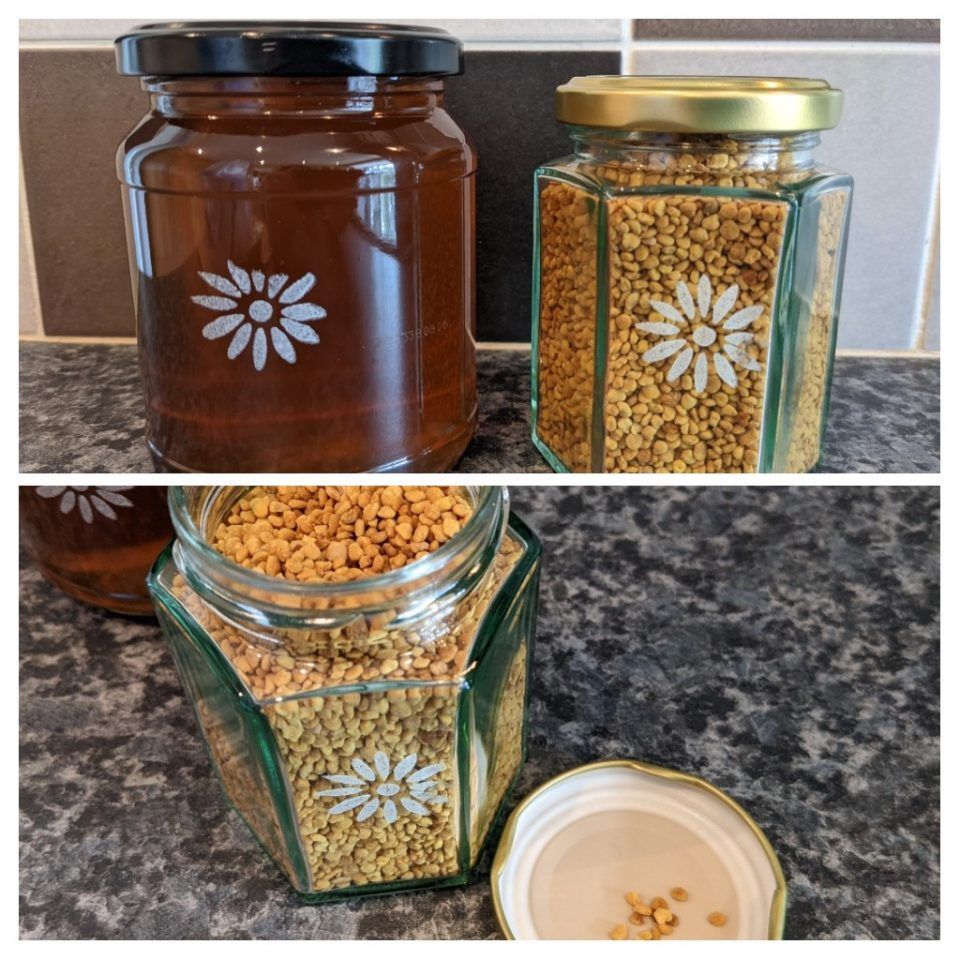
Finally, the children watched the Bee Movie and had fun picking out all the inaccuracies!